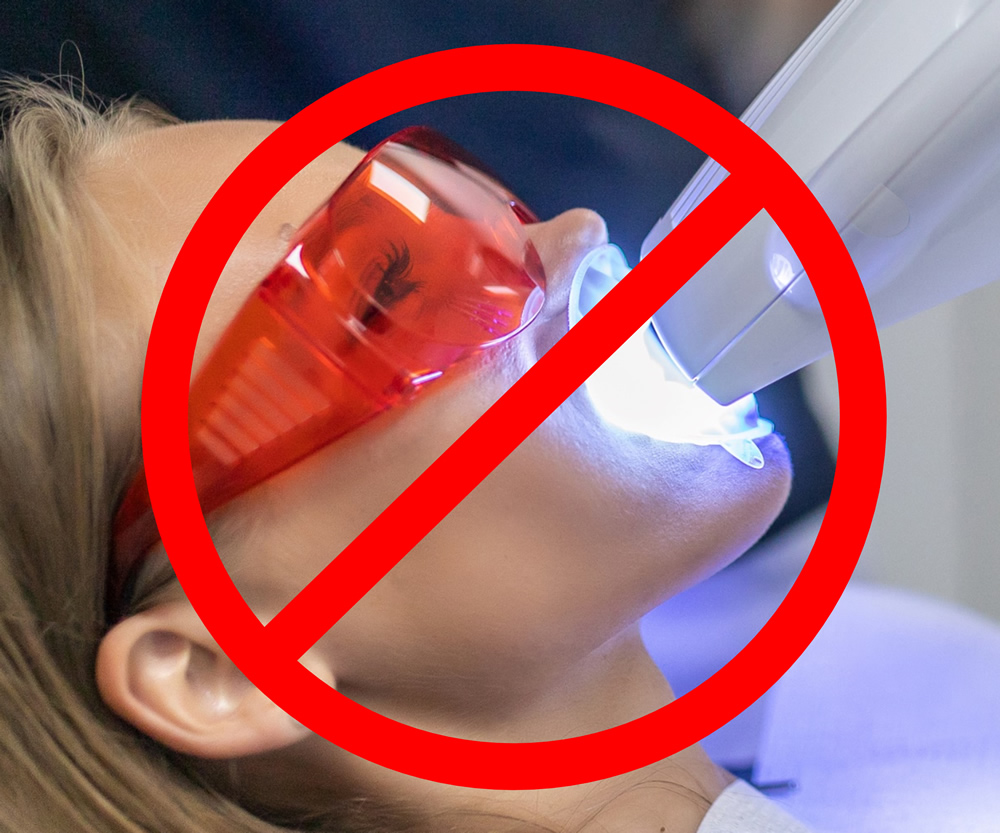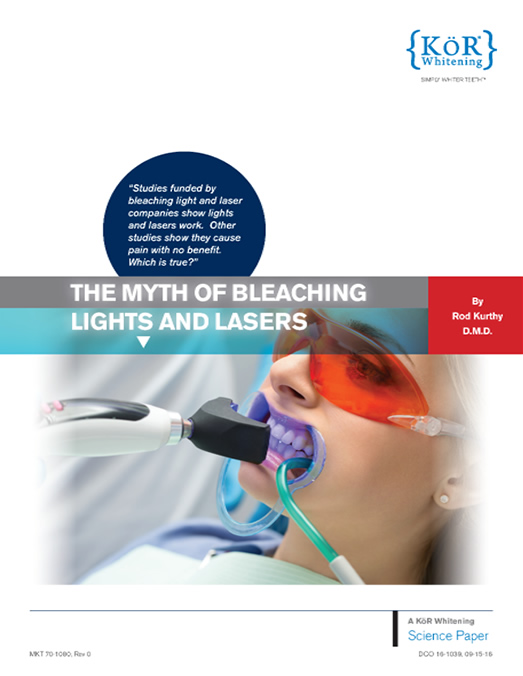Don’t Be Fooled by the Myth of Bleaching Lights and Lasers

There has been great controversy regarding the effectiveness and advisability of bleaching lights and lasers for over TWO decades. Manufacturers of these lights and lasers continue to claim that they add great benefit to the whitening process, but the science, published clinical studies (those studies not funded by bleaching light or laser manufacturers) and general consensus of dentists disagrees.
It is important to realize that the breakdown of hydrogen peroxide is an exothermic reaction.
Exothermic reactions require the release of energy (usually in the form of heat) for the reaction to proceed. Contrary to this requirement of exothermic reactions, bleaching lights and lasers add energy to the process in the form of photon energy.
According to Le Chatelier’s Principle of Chemical Equilibrium, trying to force energy (such as heat or photon energy from a light or laser) back into an exothermic reaction that must release energy, may even impede the reaction. Certainly there is no benefit to the breakdown reaction. So where is the science behind the use of bleaching lights and lasers? There is none.
Ask yourself this: If lights and lasers are supposed to be so effective at enhancing the breakdown of peroxide, why does every whitening light and laser company sell whitening gels with chemical accelerators (such as dual barrel systems)? The fact is that chemical accelerators allow us to force the peroxide to break down as rapidly or slowly as we’d like. So why do companies still claim effectiveness of lights and lasers? In our opinion, it’s simply to create marketing hype.
Dentists have also found that the use of bleaching lights and lasers greatly increases the discomfort patients feel during and after whitening. Dentists have heard that this discomfort is due to heat and/or dehydration caused by these bleaching lights and lasers (which, by the way, is not true).
The fact is that various clinical studies, including one study by Dr. Rod Kurthy, have concluded that the increased sensitivity found using bleaching lights and lasers in combination with in-office whitening gels was not due to the heat and/or dehydration caused by the lights or lasers. Rather, it was found that the combination of high concentrations of hydrogen peroxide with photon energy from bleaching lights and lasers causes the pulpal neurons to produce significantly higher levels of Substance P, which is a neurotransmitter released by pain transmitting neurons in the pulp.
So, turning on those lights and lasers could actually be turning up the sensitivity…and the pain.
For more detailed information and science background about lights and lasers, click on the KöR Science Paper below.
Get the full story on Bleaching Lights and Lasers…

KöR® Whitening Gallery
Almost any whitening company can show you a few impressive before and after photos. But we have literally hundreds of cases, submitted by doctors like you, showing the phenomenal results you can get with the KöR® Whitening System.


